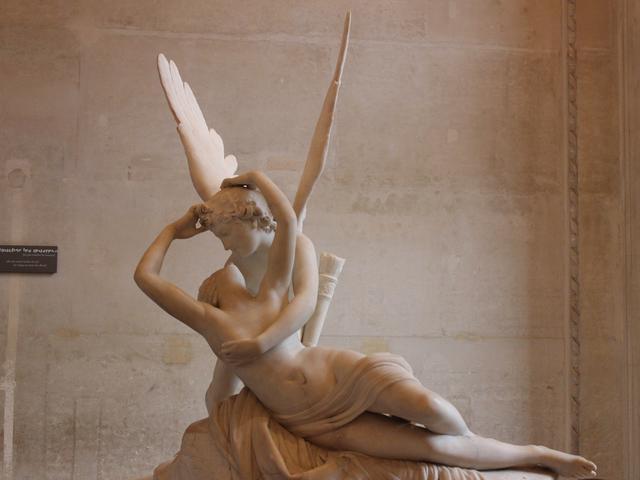Cupid and Psyche

by Antonio Canova.
At the end of the 18th century, we could appreciate many different artistic styles. Some painters produced serious themes and others preferred playful and tender scenes. The Roman Empire was once again a source of inspiration. It was also a period of political and social unrest. In 1789, the French Revolution put an end to the Monarchy for 15 years, until the Restoration. Napoleon became Emperor of France until 1815.
This charming neoclassical Canova sculpture has enchanted visitors to the Louvre for decades, including Napoleon Bonaparte, for whom the artist made several commissions.
The composition of the sculpture, its ethereal quality and its soft marble (polished creating an illusion of real skin) really appeals the imagination of the spectator. Canova was inspired by the myth of Venus, the goddess of love, who gave Psyche a task to bring back from the underworld a flask, with strict instructions not to open it. However, the curious Psyche disobeyed the goddess and opened the flask. Intoxicated by the content, she fell into a mortal sleep, until Cupid, the son of Venus, found her and kissed her, which woke her up.
Thus, Cupid is authorized by the gods to marry his beloved Psyche, becoming the goddess of the soul and attaining immortality. A story with happy ending that represents hope for the new life that came along after the French Revolution.
© Tourblink